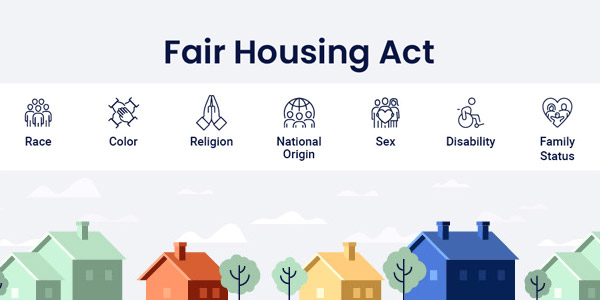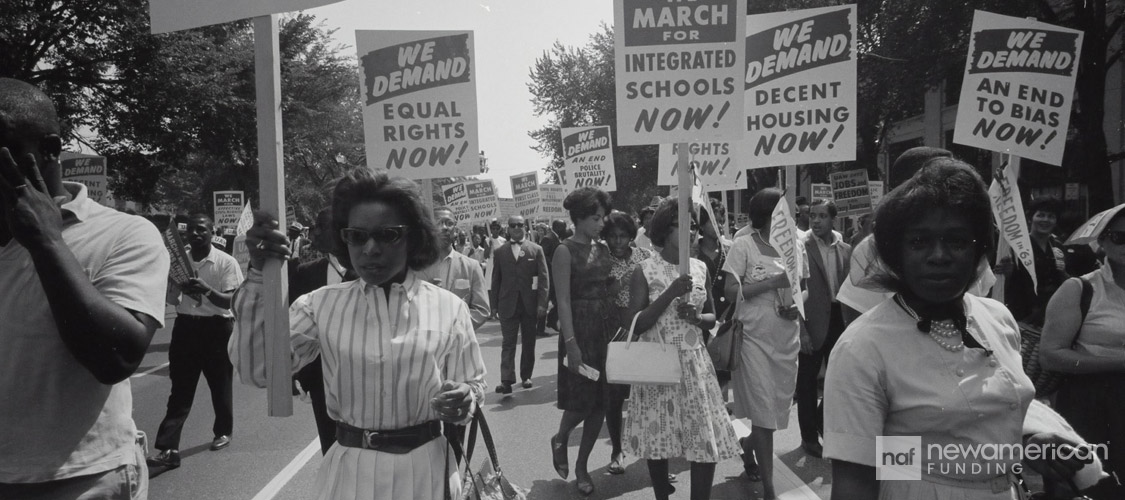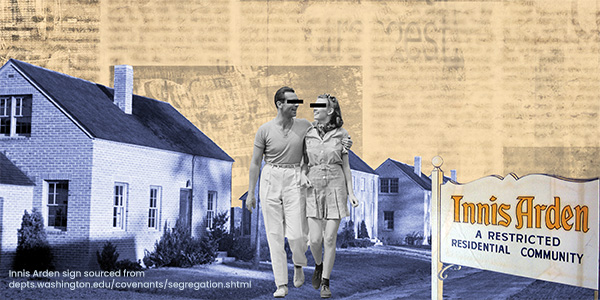Inclusive Lending
How the Fair Housing Act Combats Discrimination
May 3, 2024
You heard a lot during Fair Housing Month about discriminatory practices in lending and the structural challenges many borrowers face. Practices like redlining limited access to homes and discussed what it looks like to break those barriers to homeownership for diverse communities. One of the most significant actions taken to further Fair Housing, and why April became Fair Housing Month, was the passage and the continued amending of the Fair Housing Act.
What is the Fair Housing Act?
The Fair Housing Act was originally passed in April 1968, 56 years ago. Its passing was part of the Civil Rights Movement. In 1965, The Chicago Open Housing Movement, also known as the Chicago Freedom Movement, drew national attention to the realities of segregation in housing. The housing movement and the Fair Housing Act were both supported by many civil rights activists and organizations including Dr. Martin Luther King Jr. and the NAACP. Congress passed the Fair Housing Act in response to the housing movement and the assassination of Dr. King.
The act was an expansion of previous civil rights acts that had addressed discrimination in housing but did not have any provisions for federal enforcement.
Five Key Aspects of the Fair Housing Act
-
Prohibition of Discrimination: The Fair Housing Act makes it illegal to discriminate against any individual in the sale, rental, or financing of housing based on race or color, religion, sex (including gender identity and sexual orientation), national origin, familial status, or disability. This applies to private and public housing providers, including landlords, real estate agents, mortgage lenders, and homeowners' insurance companies.
- Accessibility for Persons with Disabilities: An amendment in 1988, 36 years ago, added disability status as an included protective class. Federal law also requires that housing providers make reasonable accommodations for individuals with disabilities. This includes allowing service animals, making physical modifications to accommodate disabilities, and providing accessible common areas.
- Advertising and Marketing: The Fair Housing Act prohibits discrimination in advertising and marketing practices. Materials and practices were not allowed to discourage or exclude individuals based on any of the protected characteristics mentioned above. These materials may not have any language or images that suggest preferences or limitations based on race, sex, or any other protected characteristics.
- Fair Lending Practices: The Fair Housing Act prohibits discrimination in lending practices. Its enforcement helps keep individuals from being denied loans or charged higher interest rates based on factors like their gender or disability status.
- Affirmative Duty to Further Fair Housing: The Fair Housing Act goes beyond prohibiting certain practices. It also requires housing providers and other organizations, including government agencies, to actively promote fair housing practices. This means they have to also be proactive in eliminating discrimination. This can include providing fair housing education and training, conducting outreach programs, and implementing policies fostering inclusivity.
Enforcement of the Fair Housing Act
The Fair Housing Act is enforced by the Department of Housing and Urban Development (HUD) and the Department of Justice (DOJ). You can report it to HUD if your housing rights have been violated. HUD is required to investigate the complaint and if evidence of discrimination is found, HUD will issue a Charge of Discrimination.
The DOJ can file a suit if there is evidence of a pattern of systemic discrimination. The DOJ can undertake certain types of lawsuits for individuals referred to them by HUD. They can also pursue criminal charges if there is evidence of violence linked to discrimination. Depending on the case type, Individuals can elect to be represented by HUD or the DOJ.
Related Laws
There are several laws related to the practice of fair lending. They include:
Equal Credit Opportunity Act: The ECOA protects credit applicants from discrimination by creditors based on race, color, religion, national origin, sex, marital status, age, and whether or not they receive any income from a public assistance program.
Home Mortgage Disclosure Act: The HMDA "requires that many financial institutions maintain, report, and publicly disclose loan-level information about mortgages." This data shows how lenders are meeting the housing needs of their communities.
Community Reinvestment Act: The CRA encourages financial institutions, such as banks and credit unions, to meet the credit needs of the communities in which they operate, specifically low- and moderate-income neighborhoods. The CRA aims to prevent redlining and promote economic development.
Discrimination in lending and housing prevents economic and social equity. Many laws and regulations were developed to help promote both fair housing and fair lending. However, there is still a long way to go to repair the damage that systemic discrimination has caused. As a leading lender, New American Funding will continue to work to serve and support underrepresented communities and share the dream of homeownership across the country.
Resources
NAF White Paper: Empowering Homeownership in Diverse Communities







 Smart Moves Start Here.
Smart Moves Start Here.